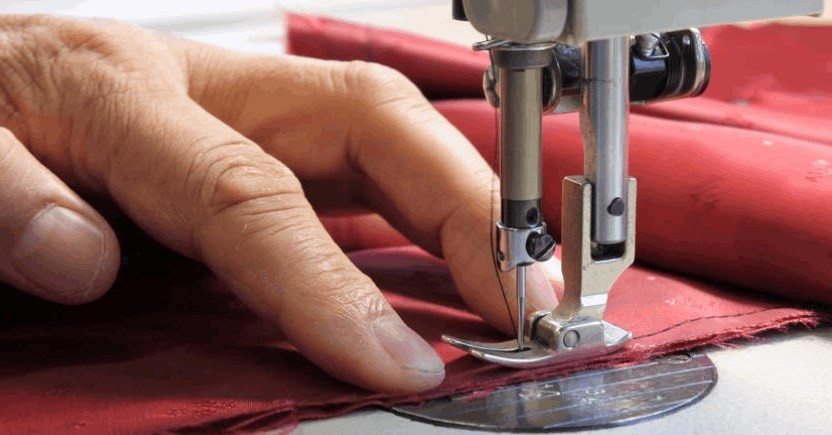Are you a whiz with a needle and thread? Do you find yourself daydreaming about fabric patterns and sewing projects?
Well, buckle up, because I’ve got some exciting news for you. Your sewing skills can do more than just mend torn seams and create beautiful garments—they can also be the key to unlocking a fabulous side hustle!
Whether you’re looking to earn some extra cash, save up for a dream vacation, or turn your hobby into a full-blown business, a sewing side hustle can be the answer.
In this blog post, I’ll guide you through the ins and outs of starting and growing a sewing side hustle that will have you stitching your way to success in no time.
Let’s dive in.
Starting a Sewing Side Hustle

Why Choose Sewing as a Side Hustle?
Sewing is a versatile and in-demand skill that offers a plethora of opportunities for creative and entrepreneurial individuals like yourself. Here are a few reasons why sewing makes for an excellent side hustle:
- Flexibility: One of the greatest advantages of a sewing side hustle is the flexibility it offers. You get to set your own hours, work from the comfort of your home, and take on projects that align with your interests and schedule. It’s like being the boss of your own sewing empire!
- Low Startup Costs: Unlike many other businesses, sewing doesn’t require a huge upfront investment. If you already have a sewing machine, basic tools, and some fabric, you’re good to go. As you gain experience and grow your business, you can gradually expand your equipment and materials.
- Creative Outlet: Sewing allows you to unleash your creativity and produce one-of-a-kind items. From clothing and accessories to home decor and custom gifts, the possibilities are endless. Plus, who doesn’t love the satisfaction of seeing their creations come to life?
- Growing Market: The demand for handmade and personalized items has skyrocketed in recent years. People are increasingly seeking unique and high-quality products that reflect their individual style. By offering custom-made and bespoke items, you can tap into this growing market and attract a loyal customer base.
Finding Your Niche
Before you jump headfirst into your sewing side hustle, it’s important to find your niche. A niche is simply a specialized area within the sewing industry where you can focus your skills and cater to a specific audience. Here are a few popular sewing niches to consider:
- Fashion Alterations: Do you have a knack for altering and tailoring clothes to perfection? Offering alteration services can be a lucrative niche, as many people struggle to find garments that fit them perfectly off the rack.
- Children’s Clothing: If you enjoy sewing adorable outfits for little ones, specializing in children’s clothing can be a fantastic niche. From cute dresses and rompers to cozy pajamas, there’s always a demand for well-made, stylish kids’ apparel.
- Custom Home Decor: Are you a whiz with a sewing machine and have an eye for interior design? Creating custom home decor items, such as curtains, pillow covers, and table runners, can be a great niche that allows you to combine your sewing skills with your love for interior styling.
- Eco-friendly Products: As sustainability becomes increasingly important, eco-friendly sewing niches are gaining traction. Consider making reusable cloth diapers, shopping bags, or even eco-friendly fashion accessories from recycled materials.
Remember, your niche should align with your passion and expertise. By choosing a niche that you genuinely enjoy, you’ll find more joy and satisfaction in your sewing side hustle.
Getting Started: Setting Up Shop
Now that you’ve identified your sewing niche, it’s time to set up shop. Here’s what you’ll need to get started:
- Create a Dedicated Workspace: Designate an area in your home where you can comfortably sew without distractions. Invest in a sturdy sewing table or desk, good lighting, and ergonomic seating to ensure your comfort and productivity.
- Stock Up on Supplies: Take inventory of your existing sewing supplies and make a shopping list of any additional items you may need. This might include fabric, threads, needles, scissors, measuring tools, and various sewing machine accessories.
- Build Your Portfolio: Start by creating a portfolio showcasing your best sewing projects. Take high-quality photos and compile them into a visually appealing album that highlights your skills and versatility. This will serve as a powerful marketing tool when you start promoting your side hustle.
- Set Competitive Pricing: Research the market rates for similar sewing services or products in your area. Consider factors like your experience level, materials used, and the time required for each project. Price your services or products competitively, taking into account both your costs and the value you provide.
Marketing and Growing Your Sewing Side Hustle
Now that you’ve set up your sewing side hustle, it’s time to spread the word and attract customers. Here are some effective marketing strategies to help you grow your business:
- Create a Website or Online Store: In this digital age, having an online presence is crucial. Build a professional website or set up an online store on platforms like Etsy or Shopify. Include high-quality product photos, detailed descriptions, and customer testimonials to establish credibility.
- Utilize Social Media: Social media platforms like Instagram, Facebook, and Pinterest can be powerful tools for showcasing your work and connecting with potential customers. Regularly share photos of your projects, engage with your followers, and collaborate with influencers or other sewing enthusiasts to expand your reach.
- Attend Craft Fairs and Markets: Participating in local craft fairs, farmers markets, and artisanal events can provide excellent exposure for your sewing side hustle. Create an eye-catching booth display, offer samples or demos, and engage in friendly conversations with attendees to generate interest in your products or services.
- Word of Mouth: Don’t underestimate the power of word of mouth. Encourage satisfied customers to spread the word about your sewing skills by offering referral discounts or incentives. Personal recommendations can go a long way in building trust and attracting new customers.
Frequently Asked Questions about Sewing Side Hustles
Here are some common questions people have about starting a sewing side hustle:
1. How do I price my sewing services or products?
Pricing your sewing services or products can be tricky. Consider your time, materials, and overhead costs, and research the market rates for similar offerings in your area. Strike a balance between affordability for customers and profitability for yourself.
2. How can I improve my sewing skills?
Improving your sewing skills takes practice and patience. Take sewing classes, watch online tutorials, and experiment with different projects. Don’t be afraid to make mistakes—learning from them is part of the journey.
3. Where can I find sewing patterns?
You can find sewing patterns at fabric stores, online marketplaces like Etsy, or by exploring sewing pattern books. You can also create your own patterns by modifying existing ones or using pattern-making software.
4. How can I handle customer orders and deadlines?
To manage customer orders and deadlines effectively, establish clear communication channels, and set realistic timelines. Keep track of your projects using a planner or project management tool to ensure you meet your customers’ expectations.
5. What legal considerations should I be aware of?
Depending on your location, there may be legal considerations for running a sewing side hustle. Research local laws and regulations regarding licensing, taxes, and product safety to ensure you comply with all necessary requirements.
Related Posts



